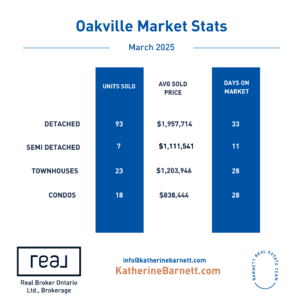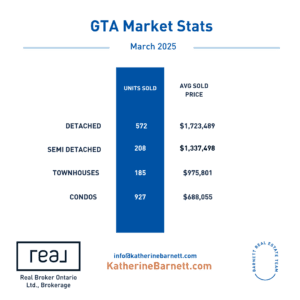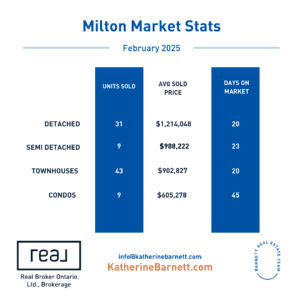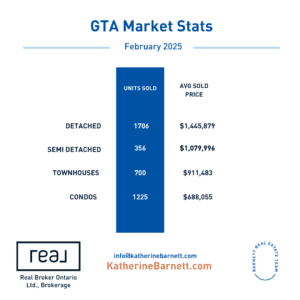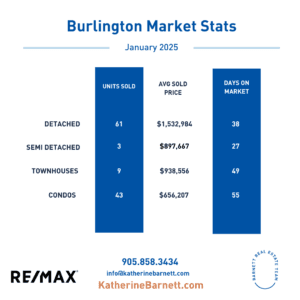Do staged homes sell faster, and for a higher price? The short answer is yes and yes. Conditions have started to moderate from the frantic seller’s market Canada has experienced in recent years, largely due to rising interest rates. With homes taking longer to sell and buyers having more time to shop the market, sellers may have to step up their game to win the attention of prospective buyers. This includes engaging an experienced, professional real estate agent, evaluating the comparables and their asking price, and then staging the property to appeal to the right buyer.
Do Staged Homes Sell Faster?
According to a study by the Real Estate Staging Association, staged homes spend 73 percent less time on the market than their un-staged counterparts. But even an un-staged property can sell under the right market conditions. A seller’s market, characterized by high demand and low inventory, generally means buyers will likely scoop up whatever they can get. In a buyer’s market, there are more homes for sale than there are buyers, which means competition is greater among sellers, giving buyers the upper hand. Under these circumstances, staging your property could tip the scales in your favour.
Do Staged Homes Fetch a Higher Price?
The same Real Estate Staging Association study revealed that 85 per cent of homes analyzed sold for five percent to 25 per cent above the listing price. The answer to this question isn’t always black and white, as the final selling price can depend on a number of factors, including buyer demand, competition and the condition of the property. With all else being equal, a staged home is more likely to leave buyers with a better impression than one that hasn’t been staged, with the potential to fetch higher offers.
What is Home Staging?
Have you ever wondered, what is home staging? Home staging is the process of preparing a home for sale by increasing its appeal to a wide range of homebuyers. Home staging isn’t as involved as a renovation, and can involve decluttering, depersonalizing and deep-cleaning; painting the walls in a fresh, neutral hue; updating hardware and lighting; rearranging existing furniture or renting some new pieces to help show the home in the best possible light. When a buyer can see your home as their home, they are more likely to make a competitive offer.
Why Stage Your Home
When selling a home, first impressions are everything. Home staging is a powerful tool that helps sellers present their property in the best light, increasing its appeal to buyers.
Helps Buyers Understand the Space
An empty home can make it difficult for buyers to gauge room sizes and functionality. Some buyers struggle to visualize how their furniture will fit, leading them to dismiss an otherwise perfect home. Staging your home provides scale and function, helping buyers see how each room can be utilized efficiently.
Creates an Emotional Connection
Beyond aesthetics, home staging helps buyers develop an emotional connection to a home. A beautifully arranged living room can make buyers envision hosting family gatherings, while a cozy bedroom setup can make them imagine restful nights. This emotional pull can be a key factor in prompting buyers to make an offer.
Highlights the Home’s Best Features
Staging your home directs attention to a home’s strengths while downplaying minor flaws. Well-placed furniture and decor can highlight architectural details, maximize natural light, and create a sense of flow between rooms. This subtle influence guides buyers toward seeing the property’s full potential.
Increases Online Appeal
Since most homebuyers start their search online, photos play a vital role in attracting interest. Virtual home staging can make homes stand out in a sea of listings, making potential buyers more likely to schedule an in-person viewing. High-quality photos of a well-staged home can dramatically increase foot traffic and engagement.
How to Stage Your Home Like a Pro
Declutter with Strategy
Decluttering is the first and most important step, but it’s not just about removing excess items. Think “functional minimalism.” Leave only furniture and decor that contribute to the purpose of a room. For example, an office space should have a desk and chair but also a lamp and a notepad to subtly reinforce its function.
Depersonalize, But Keep It Warm
Removing personal photos and unique decor helps buyers imagine themselves in the home. However, a common mistake is making the space feel too sterile. Replace family photos with neutral artwork or lifestyle images, such as scenic landscapes or stylish cityscapes, to create a welcoming atmosphere.
Maximize Lighting in Layers
Natural light is key, but don’t rely on it alone. Use a mix of lighting, like overhead fixtures, table lamps, and floor lamps, to create a warm and inviting ambiance. Try daylight LED bulbs to keep the home looking fresh and bright without harsh glares.
Use Large Mirrors to Expand Space
A well-placed mirror can make a room feel much larger. Hang a large mirror opposite a window to reflect light and give the illusion of an extra window in the room.
Add Life with Plants
Indoor plants bring warmth and vibrancy to any space. Opt for low-maintenance plants like snake plants that require minimal care but provide a fresh, lively look. Even in bathrooms, a small eucalyptus bundle or a potted orchid can make a big impact.
Avoid Over-Staging
While decor is important, too much can make a space feel cramped or artificial. The goal is to complement the home, not distract from it. Stick to neutral colours with a pop of contrast, such as a navy throw pillow on a beige couch, to keep things visually appealing.
Soure: RE/MAX








